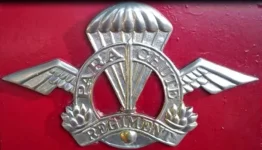The sight of a sailor in crisp white attire is iconic, but have you ever wondered why this tradition persists?
While there's a mix of practical, historical, and symbolic reasons, not every rationale stands up to scrutiny. Let's dive into the origins and continued use of white naval uniforms.
Historical Influences
- Early Fabrics: It's true that cotton, a naturally white fiber, was a dominant material for clothing in ancient times. Early sailors likely wore simple, undyed garments due to the limitations of the era.
- Lack of Standardization: Before organized navies, seafarers wore whatever they had. White might have been common, but it wasn't a mandated uniform color.
Practical Considerations
- Heat Reflection: White does offer some heat protection compared to darker colors. This is a valid benefit in tropical climates.
- Visibility: In low-light or emergency situations, white uniforms can aid in visibility, especially against the dark backdrop of the ocean.
- Hygiene: While white does show dirt easily, this can encourage cleanliness, important in the confined conditions of a ship.
Symbolic Meanings
- Peace: Historically, white flags were used as a symbol of surrender or truce. Some view the white naval uniform as an extension of this symbolism, representing peaceful intentions. However, the reality of naval warfare often contradicts this notion.
- Integration of the Seas: The idea that white symbolizes the integration of the seven seas is poetic but lacks a scientific or historical basis.
Dubious Claims
- Cost: While undyed white garments might have been cheaper historically, modern uniform production eliminates this cost difference.
- "Looking Great": While personal opinions on aesthetics vary, it's subjective to say white uniforms inherently look better than other potential color choices.
The Power of Tradition
Ultimately, the most compelling reason for the continued use of white naval uniforms is tradition.Navies are steeped in customs, and the white uniform has become a symbol of naval identity and heritage.
While some practical justifications exist, the persistence of white speaks to the power of tradition and visual symbolism in military institutions.
Variations to Note
It is important to note that not all international navies have strictly white uniforms. Some have variations for different ranks or operational needs.Further, many modern navies are moving towards more practical uniforms for daily shipboard wear, sometimes with camouflage patterns, while retaining the iconic white for ceremonial occasions.






